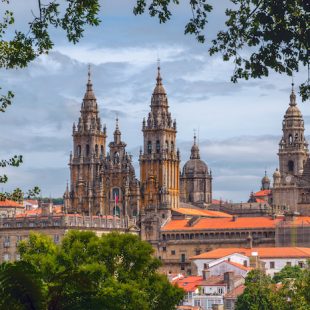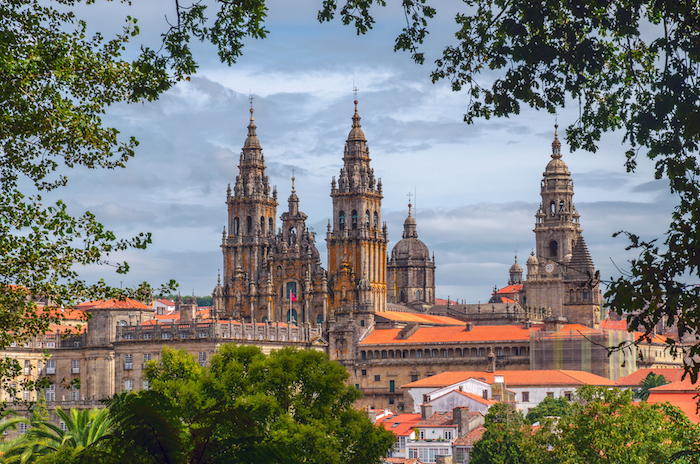
Key highlights of Santiago de Compostela
There is so much to tell about the majestic city of Santiago de Compostela in the region of Galicia, North-West Spain. A city perfect for evening strolls, in which you can lose yourself in the many stone paved streets of the old part of town. The whole of the city is alive and bustling with students, pilgrims and tourists.

You simply cannot describe Santiago de Compostela without first mentioning the cathedral and the square in which it is located, known as the Praza do Obradoiro. This imposing cathedral is nationally famous for being the destination for one of the world’s greatest pilgrimage routes, known as the Camino de Santiago.
Pilgrims have been travelling these routes for centuries as the remains of James the Apostle are said to lay in the cathedral. The pilgrimage has become very popular in recent years and it is estimated that authorities have now handed out more than 198,000 certificates to those that have walked at least 100 kilometres, or 200 if they used a bicycle.
There is the festival of St James that takes place on 25th July. If it falls on a Sunday, it is regarded as a Holy Year. The last time this happened in 2010 approximately 12 million people visited the city to take part in the celebrations.
Santiago de Compostela’s Botafumeiro, which is a giant incense spreader, and the largest in the world, can sometimes be seen swaying back and forth on chains and takes eight men to swing it.
Other great features of this remarkable city include the modern ‘City of Culture of Galicia’ that looks like a giant scallop on the skyline. It houses a museum, library and changing exhibitions.
There is also the Museum of the Galician People, which is housed in an old Dominican friary. It contains a tremendous spiral staircase and access to the beautiful nearby church and gardens.
In contrast to the predominantly traditional vibe and makeup of Santiago de Compostela is the Galician Museum of Contemporary Art, situated nearby in the Puerta Del Camino.
Both this museum and the Museum of the Galician People are situated right next to the serene Bonaval Park, a quiet, secluded spot, and the perfect place to sit and contemplate all of life’s troubles.
There are plenty of places to eat in this bustling Galician city. Many of the locals and young students head for Rua do Franco near Obradoiro Square and Rua da Raina.
If you visit Santiago de Compostela and own a pilgrim passport, student card or pension card, remember to bring it as you may be able to get serious price reductions on many of the city’s beautiful attractions.


